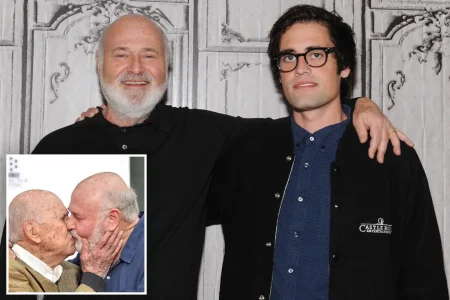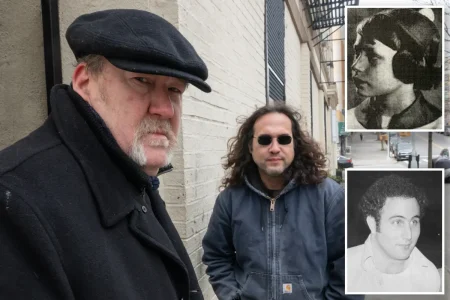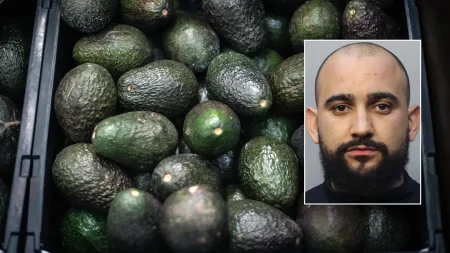Justice Department’s Death Penalty Pursuit in UnitedHealthcare CEO Case Faces Legal Challenge
In a lengthy legal motion filed Saturday, attorneys for Luigi Mangione are making a renewed effort to prevent the Justice Department from seeking the death penalty in the high-profile assassination of UnitedHealthcare CEO Brian Thompson. The 27-year-old former Ivy League student, who allegedly stalked and fatally shot Thompson on a New York City sidewalk last December, now finds himself at the center of what his defense team characterizes as a politically motivated capital punishment case.
The 118-page motion presents a multifaceted argument against the death penalty pursuit, with Mangione’s legal team describing their client as “a 27-year-old Italian-American dual citizen whose beautiful, promising life has been derailed.” They paint a picture of a young man from a “large, close, loving family” in Maryland who is now “fighting for his life against a government that seeks to execute him.” Central to their argument is the claim that the Trump administration is using Mangione’s case to demonstrate its commitment to expanding capital punishment and to contrast itself with the Biden administration, which had removed 37 of 40 inmates from federal death row before leaving office. This, they argue, reveals political motivations rather than a pursuit of justice proportionate to the crime.
A particular focus of the defense’s challenge involves public statements made by Attorney General Pam Bondi, who they argue has prejudiced the case through comments in media appearances and social media. They specifically highlight her statement on “Fox News Sunday” where she declared, “I was a capital prosecutor. I tried death penalty cases throughout my career. If there was ever a death case, this is one.” Mangione’s attorneys assert that such comments from the nation’s top law enforcement official effectively tell the public “that Mangione is guilty and should be executed” before he has had his day in court. This, along with other public commentary from justice officials, forms the basis for their claim that Mangione’s constitutional rights have been repeatedly violated.
The defense motion outlines six specific constitutional violations they believe have occurred in the case. Beyond Bondi’s allegedly prejudicial statements, they argue that Mangione should not have been federally indicted while a defense motion regarding those statements was still pending. They characterize the decision to seek the death penalty as “arbitrary and capricious” in violation of the Fifth and Eighth Amendments, and claim the indictment itself was obtained through “unconstitutional and prejudicial conduct.” The motion goes further to challenge the broader application of capital punishment in the United States as arbitrarily imposed and argues that the Federal Death Penalty Act itself is constitutionally insufficient. These comprehensive challenges aim to either dismiss the federal indictment entirely or, at minimum, prevent prosecutors from pursuing the death penalty.
Adding complexity to the case is the parallel state prosecution, where Mangione initially faced terrorism charges that were recently dismissed by a New York judge. He now faces a top state charge of second-degree murder, while federally he stands accused of stalking, murder through use of a firearm, and other gun charges. The defense has criticized New York City officials for allegedly overhyping the state case and leaking details about what they’ve called a “manifesto” – a term the defense objects to – and anti-health insurance industry messages written on bullet casings connected to the murder. This multi-jurisdictional approach to prosecution has created additional layers of scrutiny for both the evidence and the procedures being employed against Mangione.
The case itself stems from a shocking public assassination that occurred on December 4 when Thompson, a 50-year-old Minnesota father of two, was shot in the back on a New York City sidewalk near a hotel where he was scheduled to meet with Wall Street investors for a shareholder conference. After a photograph of a grinning Mangione went viral, authorities located and arrested him in Altoona, Pennsylvania, five days after the ambush. The murder weapon reportedly contained 3D-printed parts, adding a technical dimension to the case that spans three jurisdictions – New York, Pennsylvania, and federal court. Throughout these proceedings, Mangione has maintained his innocence, pleading not guilty to all charges.
Federal prosecutors have previously dismissed some of the defense team’s arguments, particularly stating that the defense has no authority over how evidence is presented to a grand jury. As the legal battle intensifies, the case highlights significant tensions in the American justice system regarding capital punishment, prosecutorial discretion, and the intersection of politics with high-profile criminal cases. The court’s decision on this motion will not only impact Mangione’s fate but could potentially influence how death penalty cases are approached in the current political landscape. For now, the young man once described as having a promising future awaits a decision that will determine whether he must literally fight for his life in court or face a maximum punishment of life imprisonment instead.











